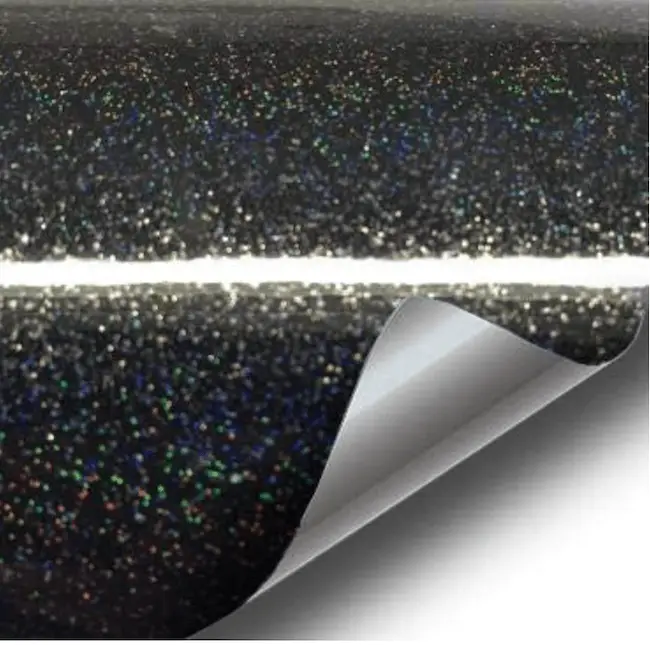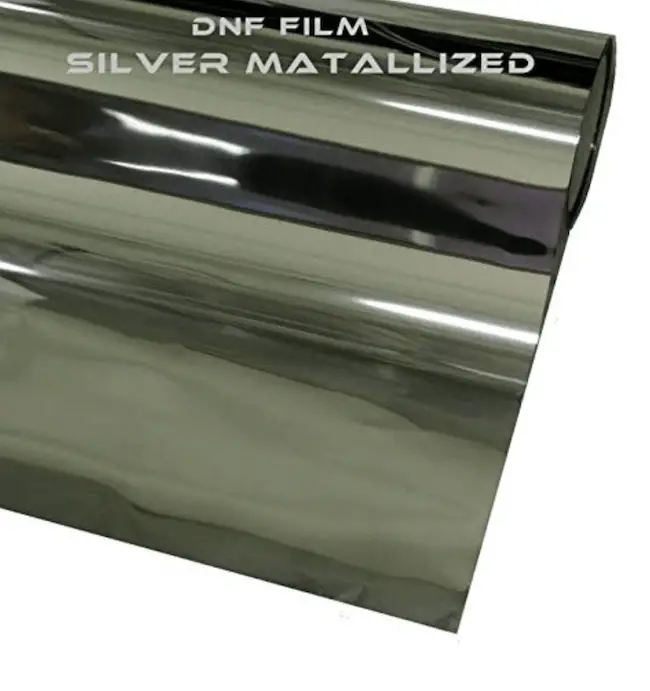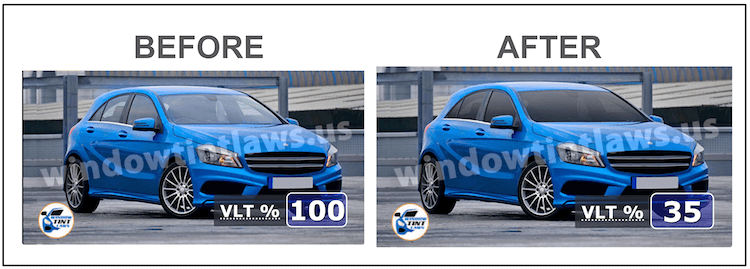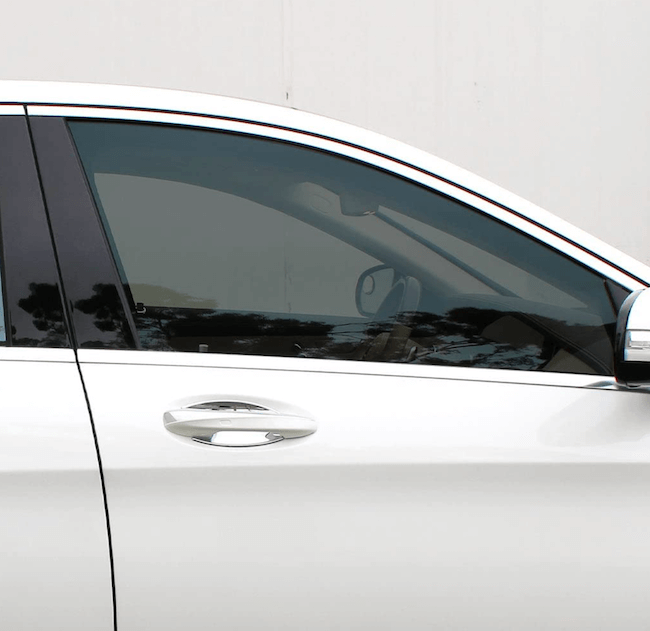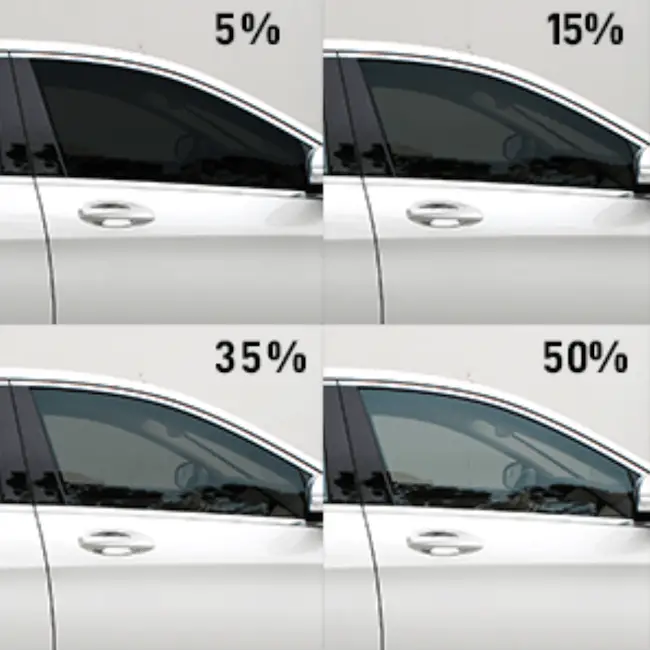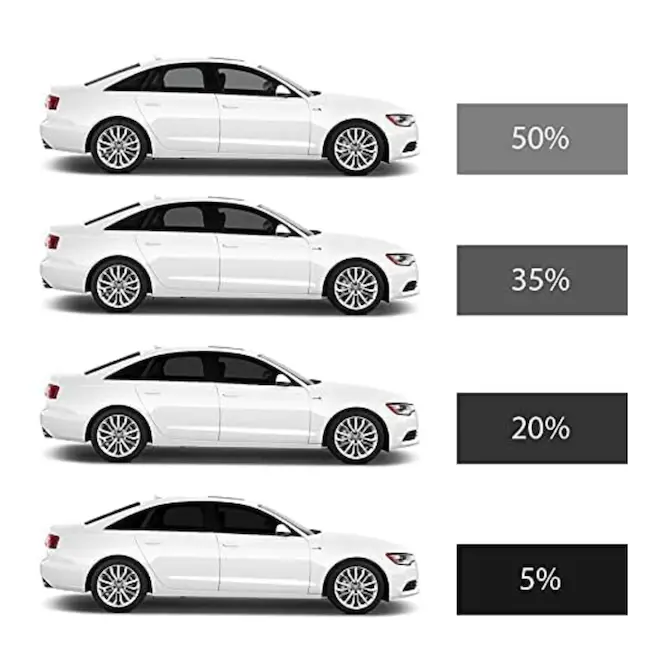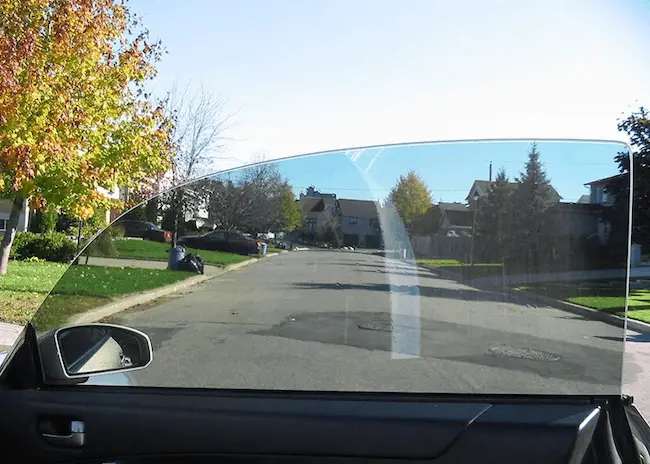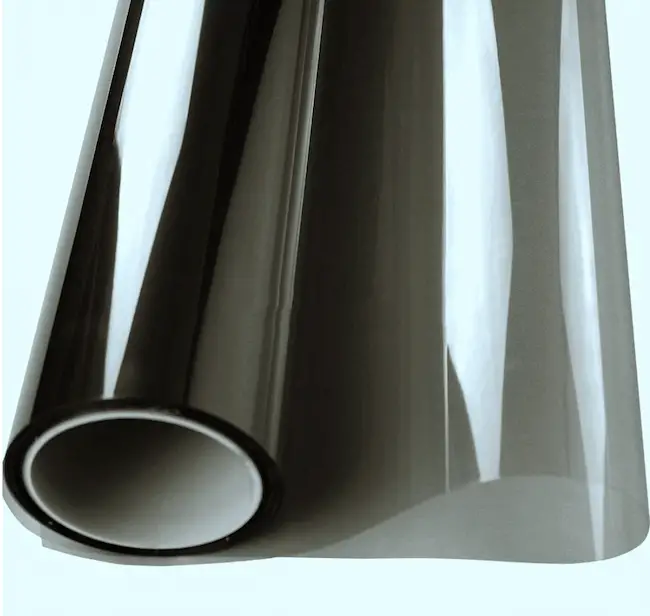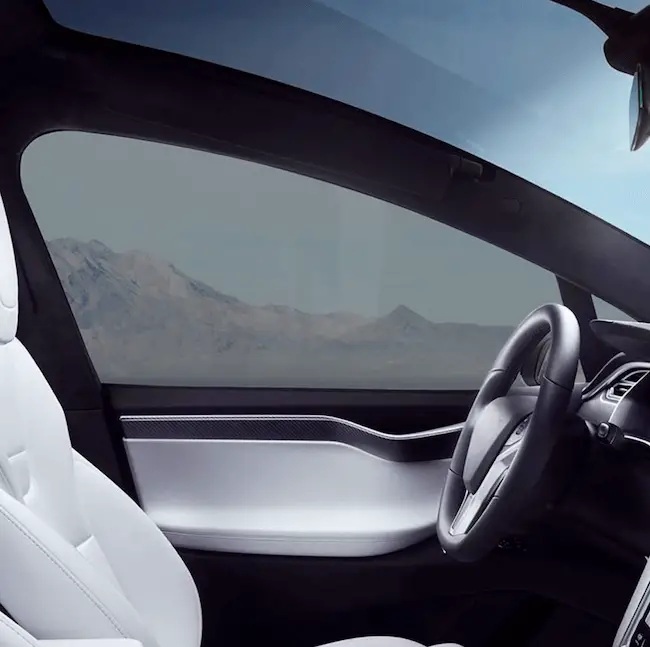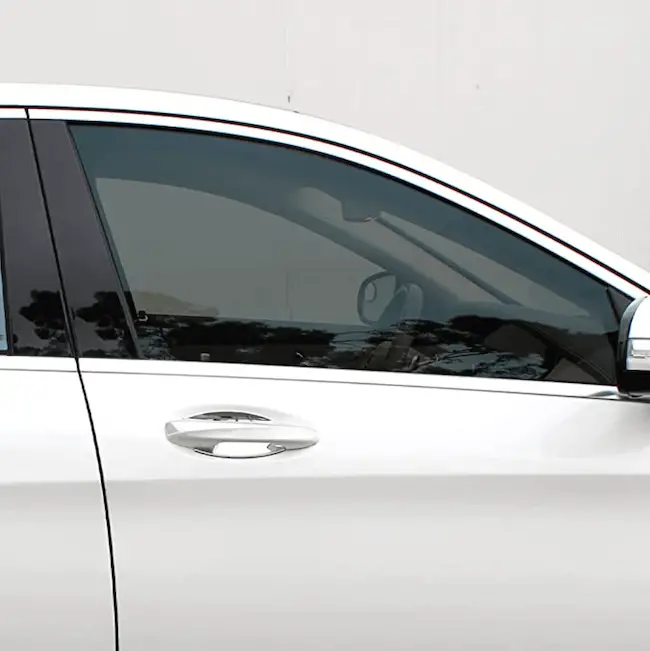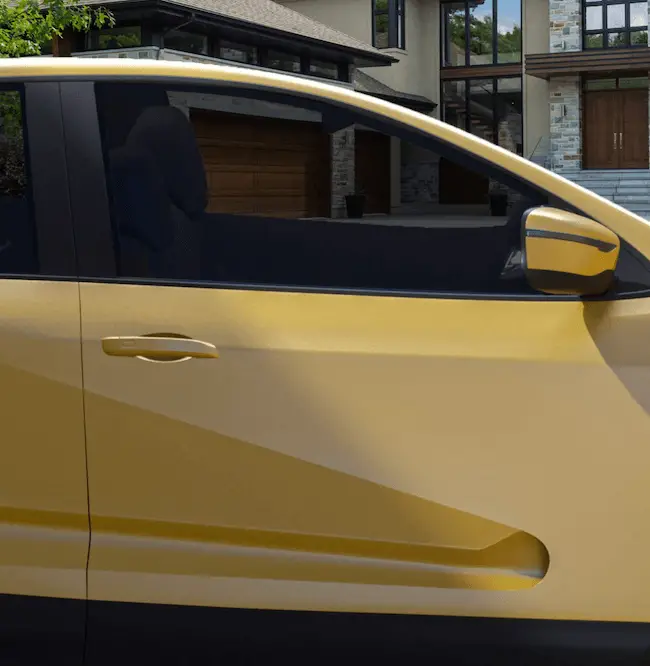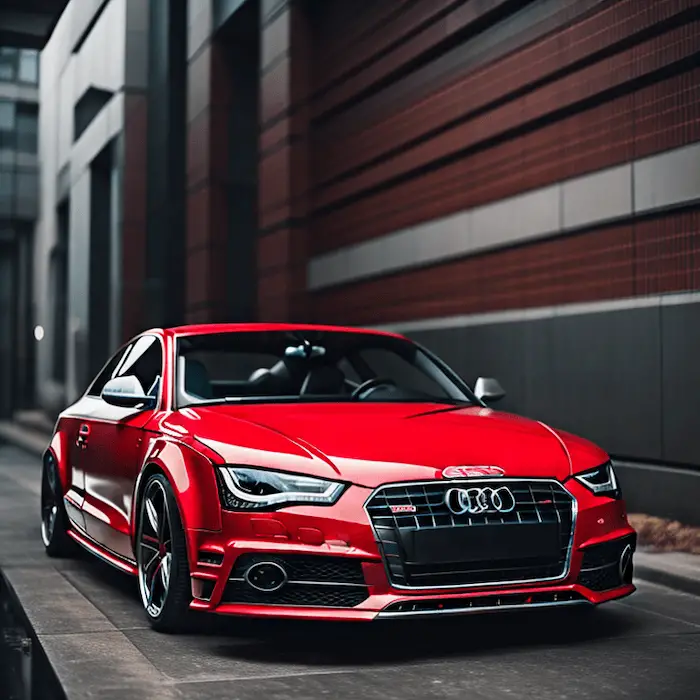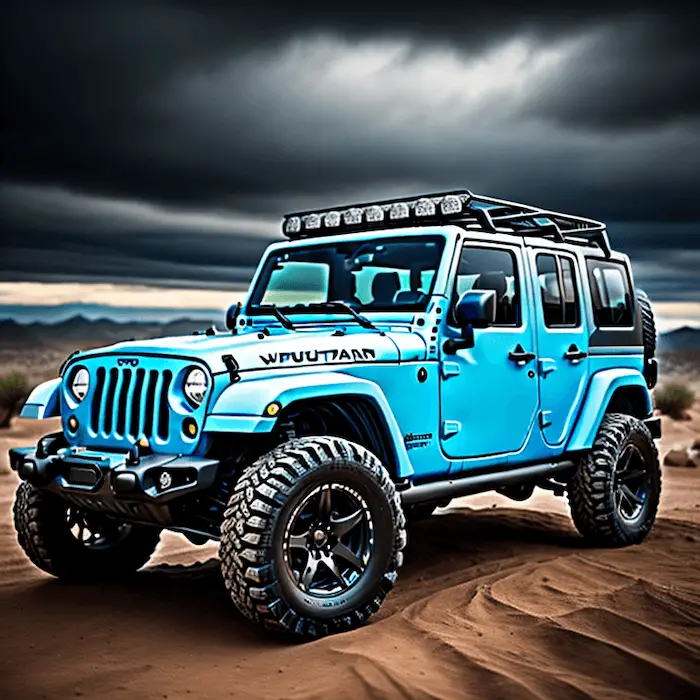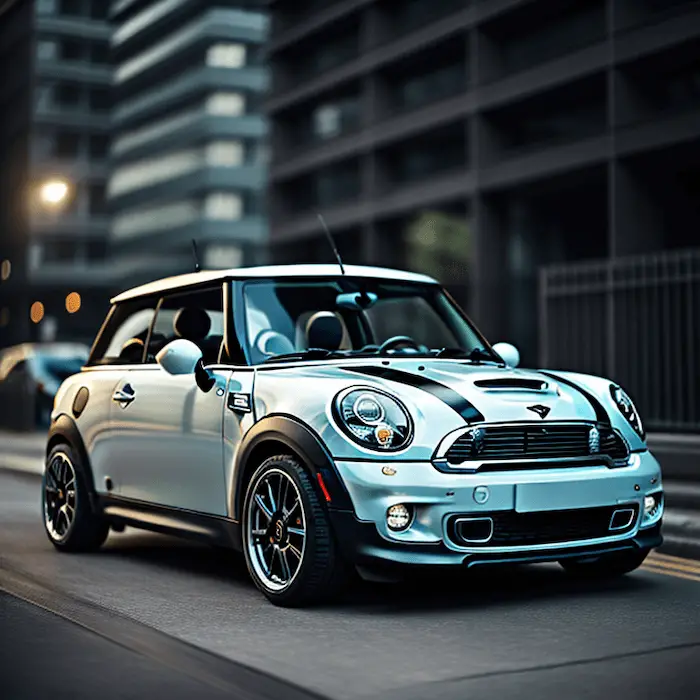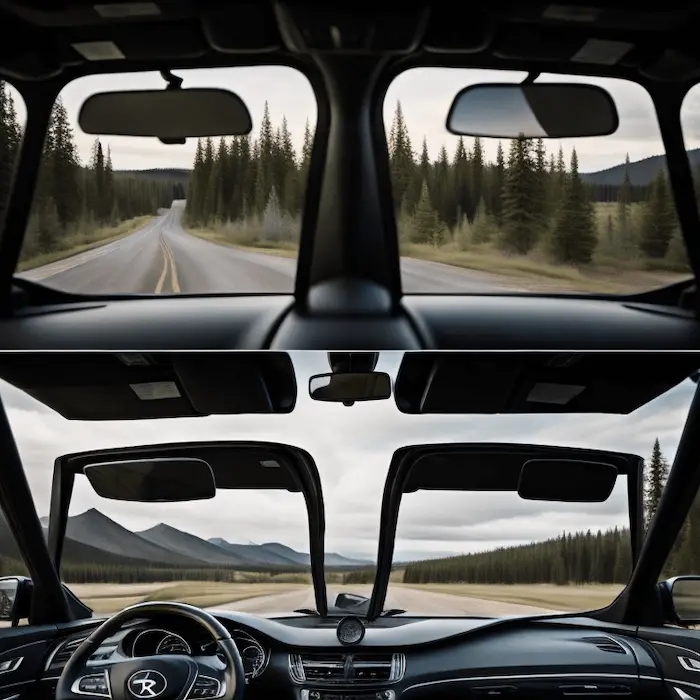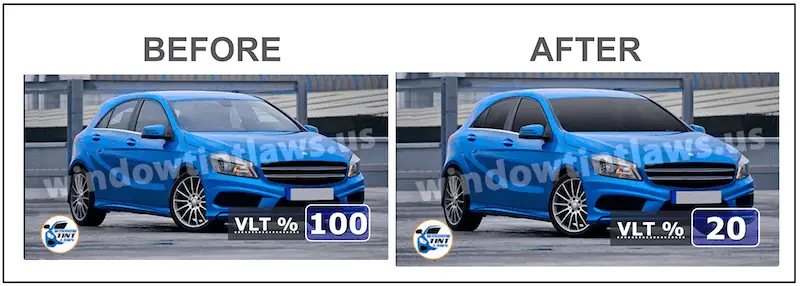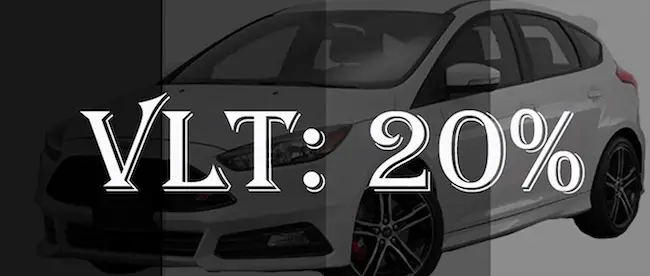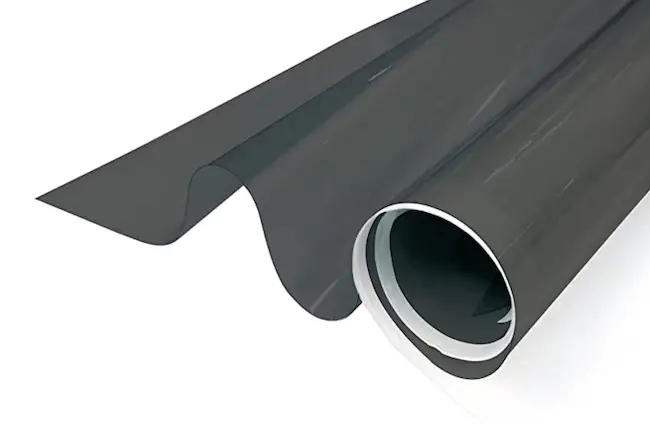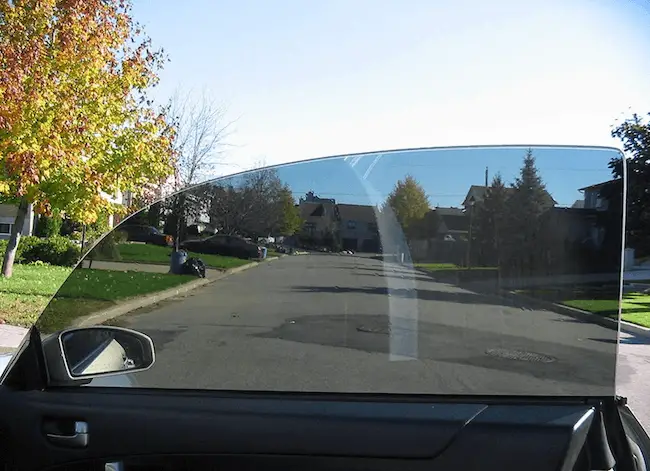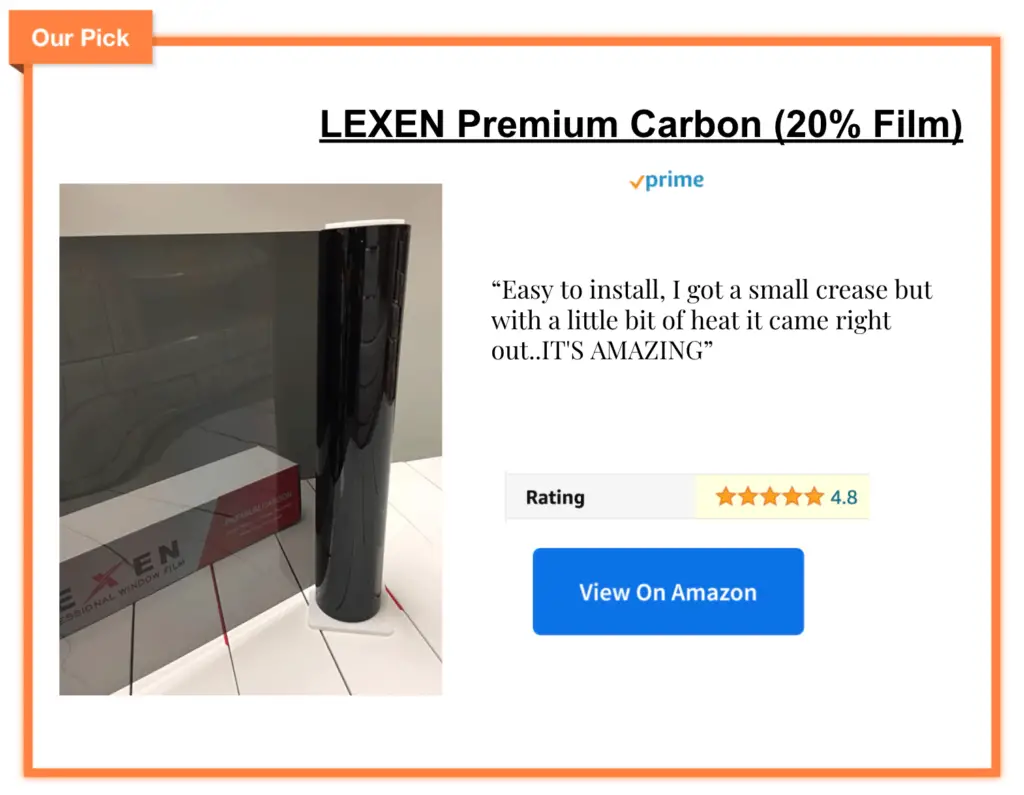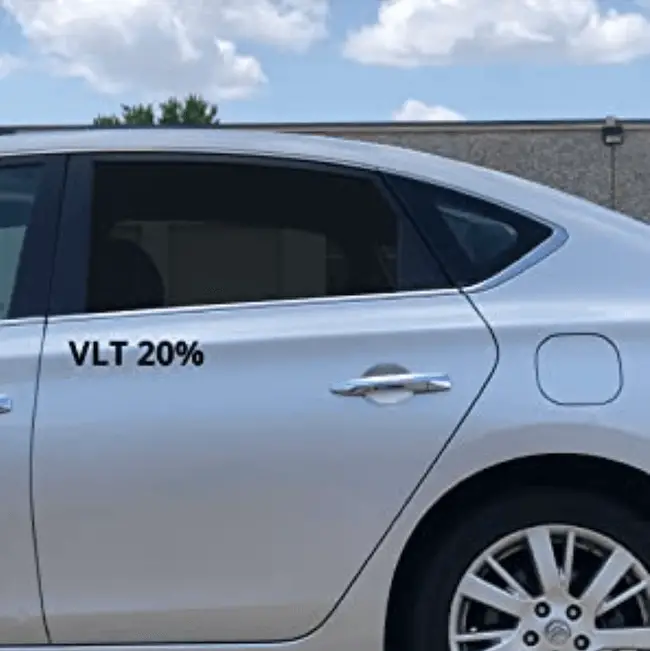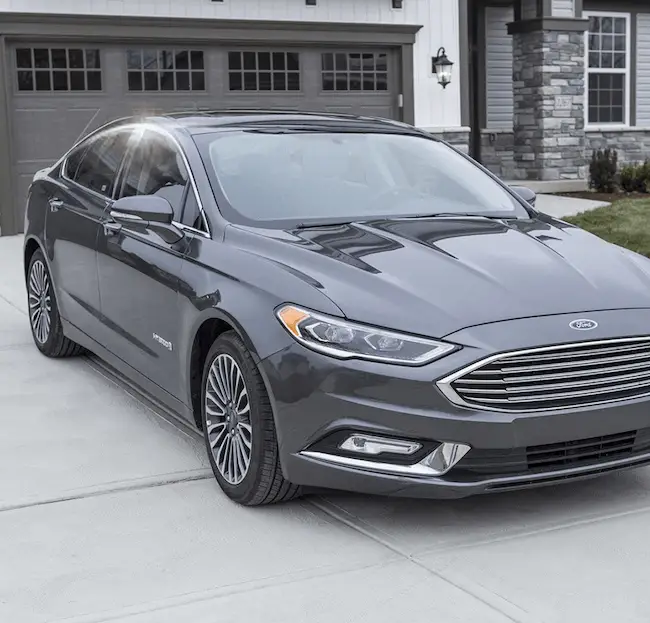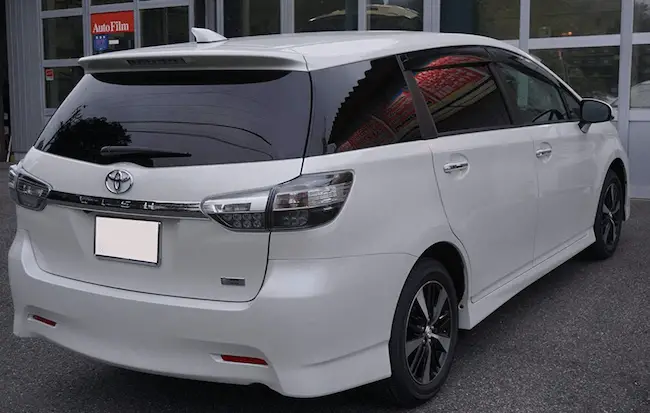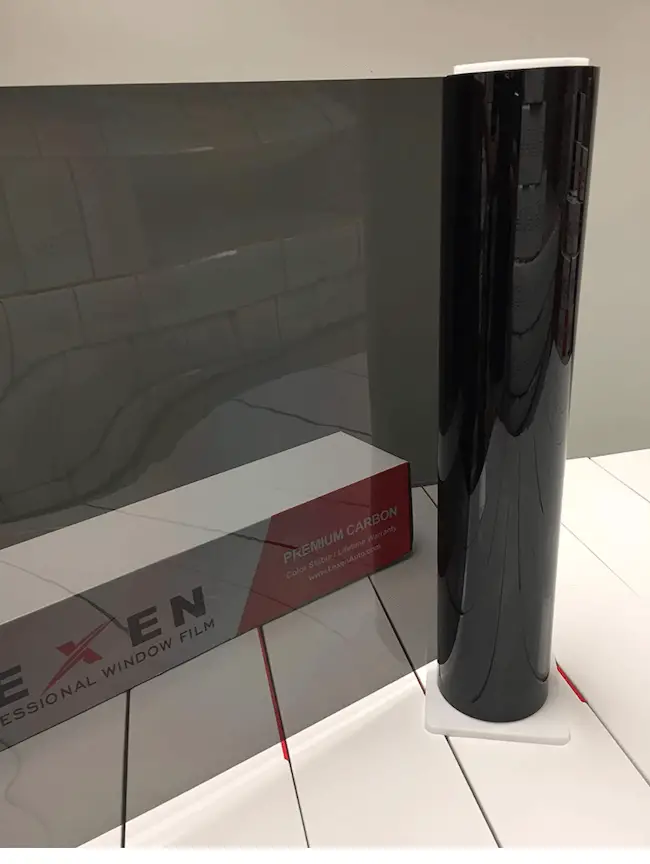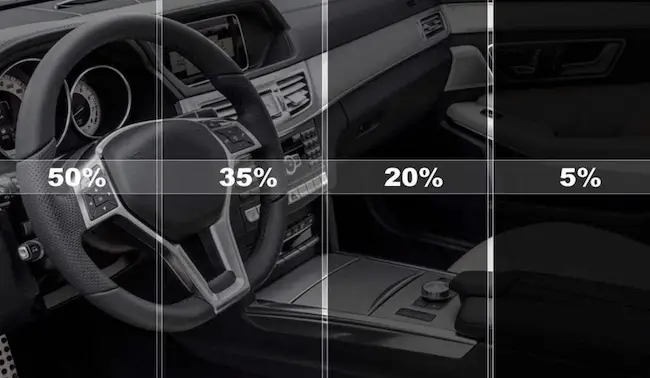25 Window Tint
So what is 25 percent tint? How dark is it? Is it easy to see through? How much does it cost?
25 percent tint means that your windows will allow 25 percent of the light to pass through the film.
This will make them darker and more difficult to see through. In some states, this is the maximum tint percentage level that you are allowed to have on your windows.
The darkness of the tint depends on personal preference – some people like it to be very dark, while others prefer a light tint.
Generally speaking, 25 percent tint is on the darker end of the spectrum and can become difficult to see through.
25 TINT FILM – BEST CHOICE
25 tint percentage films are available online for purchase, here are some top options based on reviews, customer feedback, pricing, and brand.
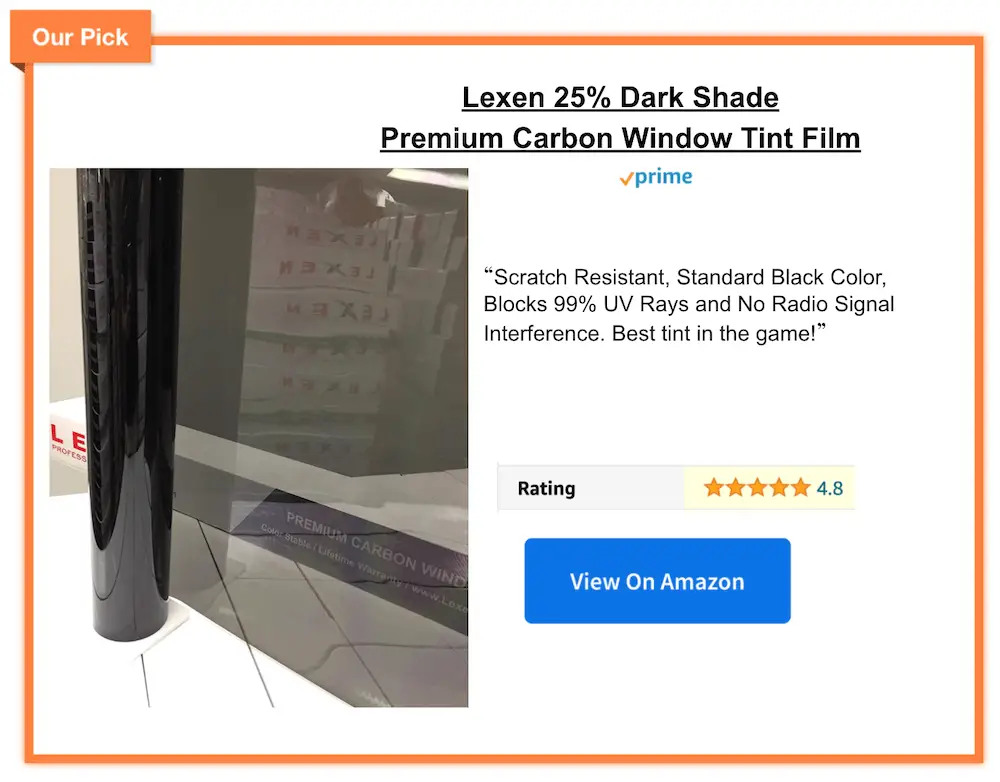
25 PERCENT TINT BEFORE AND AFTER (PICTURE)
Below is a before and after picture of a car that started with no window tint film and then added a 25 percent tint so you can visualize the difference before and after the tint was added.
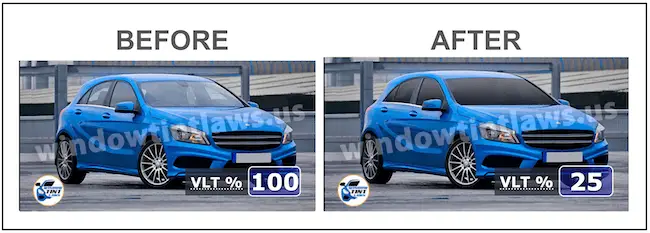
WHAT DOES 25 TINT MEAN?
25 tint is a term that is used to describe a window film that allows 25 percent visible light transmission (VLT).
This means that 75% of the visible light will be blocked.
Essentially, the lower the tint percentage, the less light can pass through, making 25 window tint darker than 3/4’s of all other tint film options.
HOW DARK IS 25 PERCENT TINT?
25 window tint film is in the range of options that is illegal for most states’ front windows.
Visibility becomes one of the main reasons that most states’ tint laws do not allow dark tint percentages for cars and declare them illegal for front side windows and passenger windows.
Although select states will allow this tint on rear windows & back windshield (back window).
CAN YOU SEE THROUGH 25 WINDOW TINT AT NIGHT?
In the daytime, it is possible to see through and into the car’s interior, but you may need to stand close to the car.
- In low light conditions or at night, 25 tints will be harder to see through than lighter tints. This is because the lower the VLT, the more light is blocked.
- So during nighttime driving, it is will be more difficult to see through a car that has 25 percent tint applied.
IS 25% TINT DARK ENOUGH?
25 window tint is a good option if you are looking for something that is not too dark, but not too light either.
It’s a great choice for those who want some privacy and sun protection from UV Rays without making the car too dark and glaringly obvious to authorities or police officials.
When it comes to safety, there are pros and cons to 25 tint.
Darker tints can offer more privacy and studies have shown that cars with a dark enough tint have been found to deter burglars or someone who is attempting to break into the car.
WHAT IS THE DIFFERENCE BETWEEN 20% AND 25% WINDOW TINT?
The percentage difference between 20% and 25% tint is just 5%.
However, this can make a significant difference in how dark the tint appears.
20 percent tint will be darker than 25 percent tint and may be more challenging to see through.
If you want to go really dark, you can look to 5% tint, sometimes called “limo tint”.
WILL 25% TINT REDUCE GLARE?
25 percent tint can help reduce glare, but it will not completely eliminate
HOW MUCH DOES 25% TINT COST?
Window tint prices vary depending on the brand, the quality of the film, and the percentage of tint.
Generally speaking, 25 percent tint will cost somewhere in the range of $40 for a single roll of tint film.
If you are looking to take your car to a tinting shop to have it professionally done, for your typical sedan, 25 tint installed on all 4 windows could be between $150 to $450 depending on the type (quality) of film you select.
25 TINT FILM – BEST CHOICE
25 tint percentage films are available online for purchase, here are some top options based on reviews, customer feedback, pricing, and brand.
LEXEN 2Ply Premium Carbon (25% Tint)
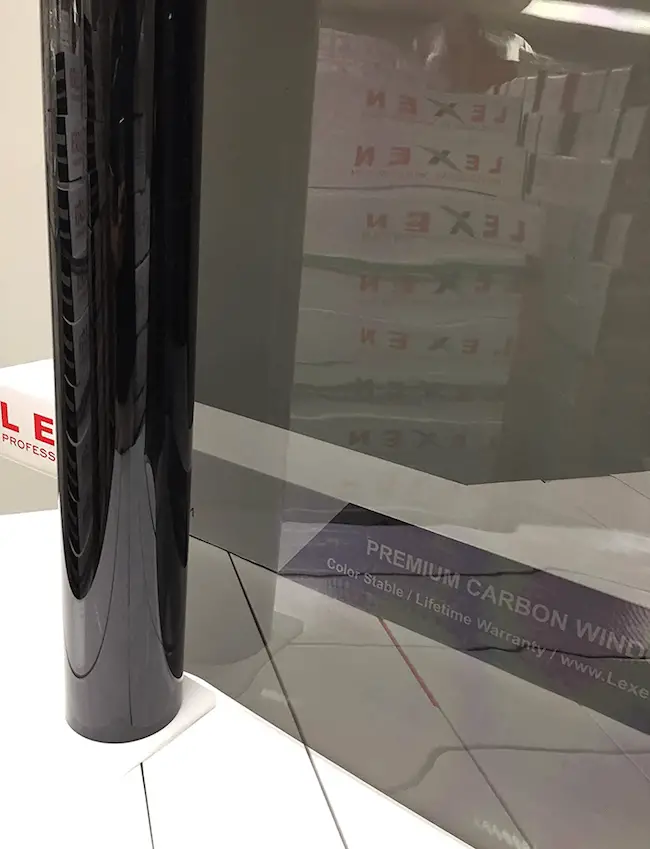
MotoShield Pro Ceramic Window Tint Film – 25% VLT
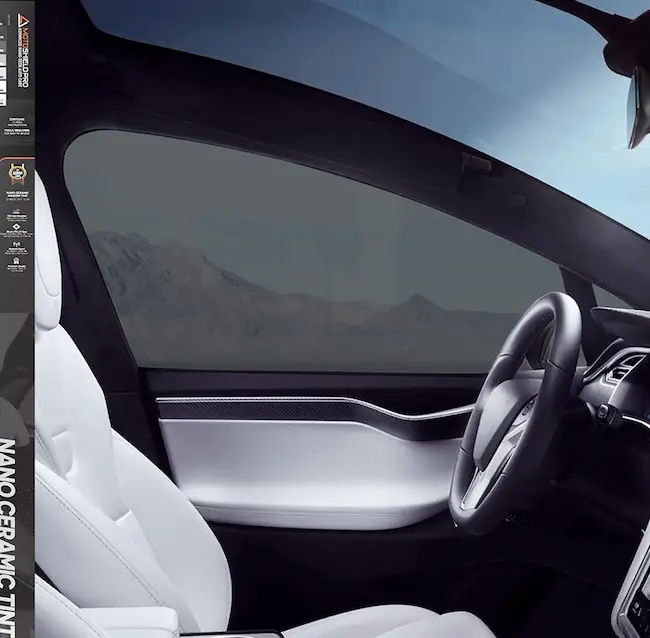
Myuilor 25% DIY Professional Adhesive Window Tint Film
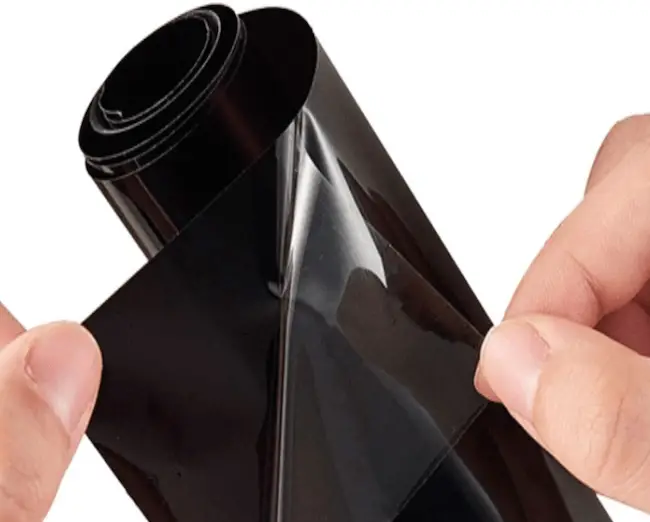
25 TINT ON CARS – PICTURES (EXAMPLES)
Pictures of cars with 25 tint so you can get an idea of how dark the tint is and what it could look like on your vehicle.
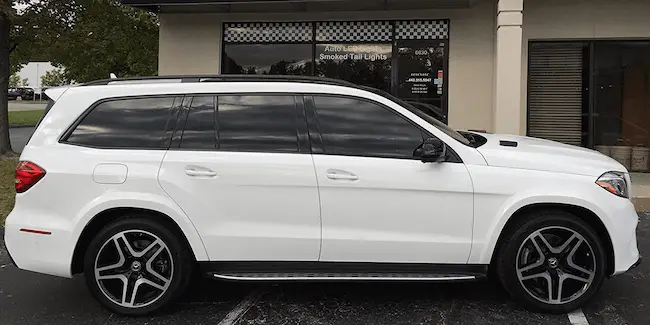
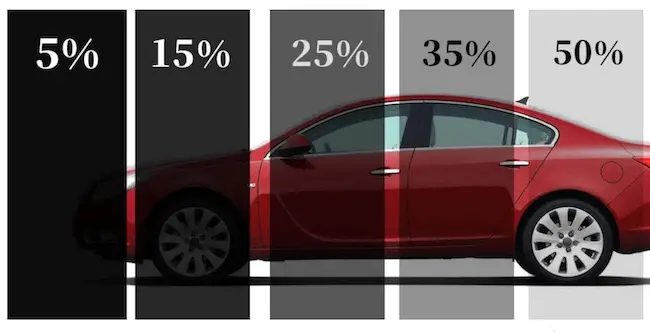
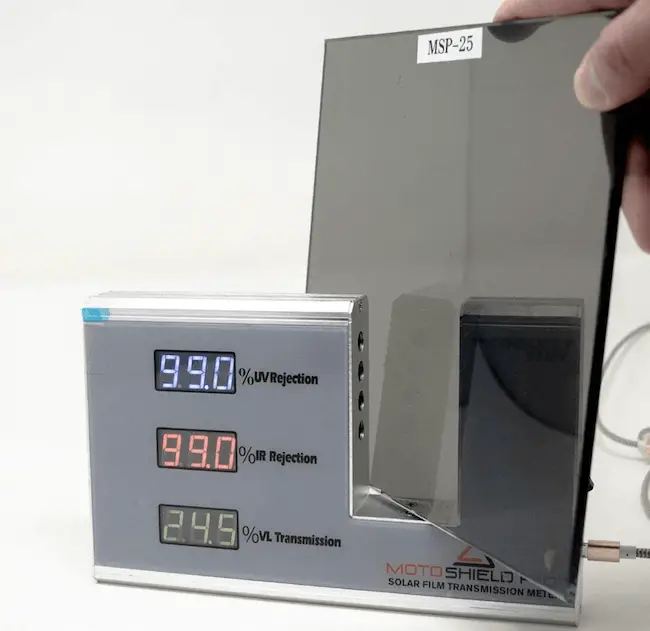
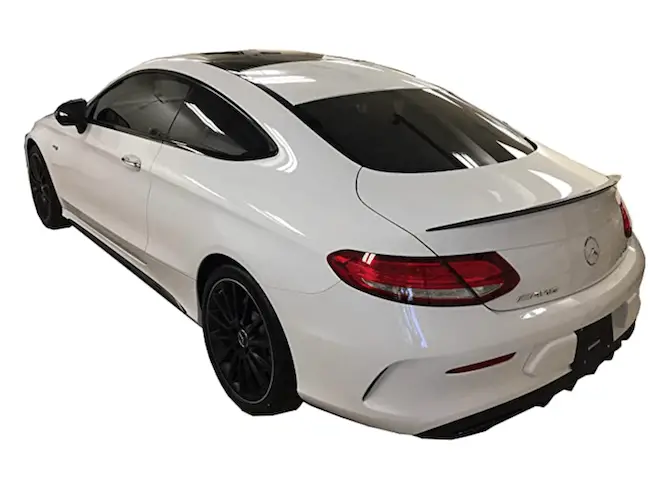
25 PERCENT TINT CAR WINDOW TINT
When it comes to 25% percent tint, there are a few things you should know before deciding if this is the right option for you.
- First, understand that this level of tint is darker than most and may be difficult to see through in low light or at night.
- Second, you’ll want to check the window tinting laws in your area and know that this level of tint is illegal in most states (front windows), but not all.
Interested to learn more about other tint percentages?

